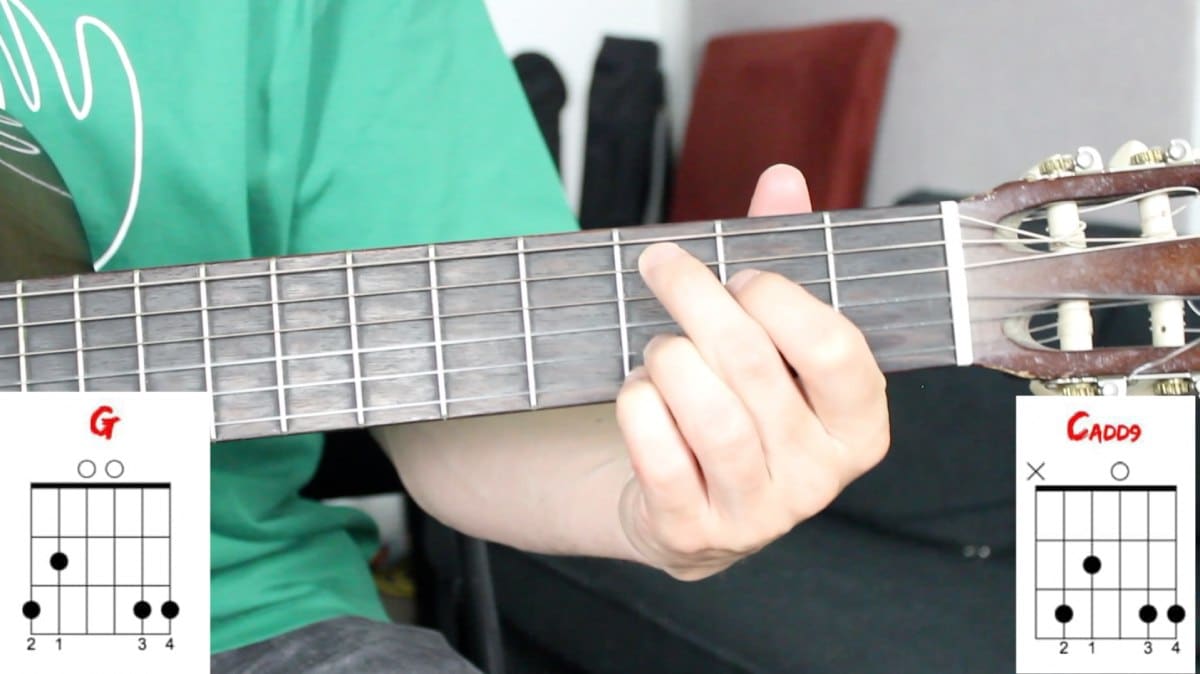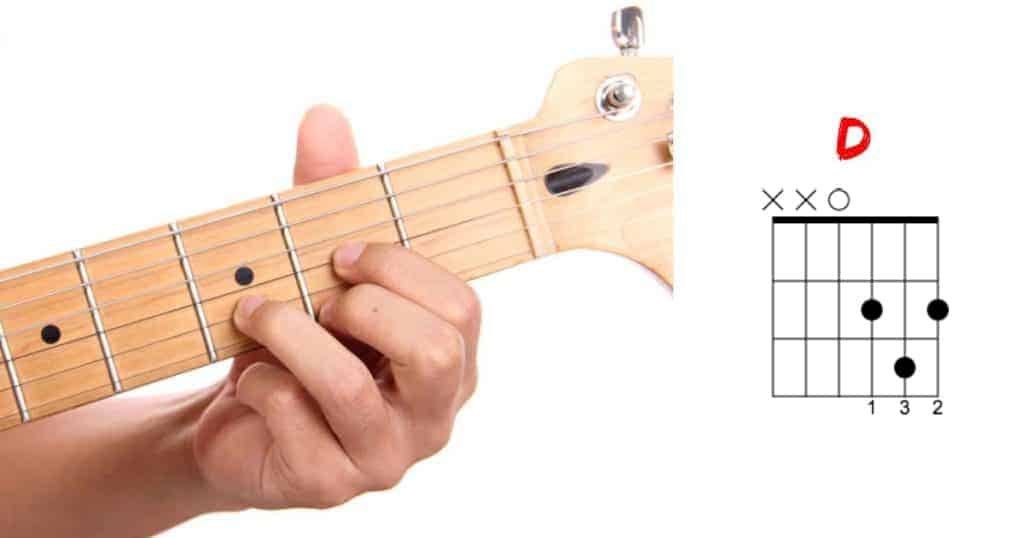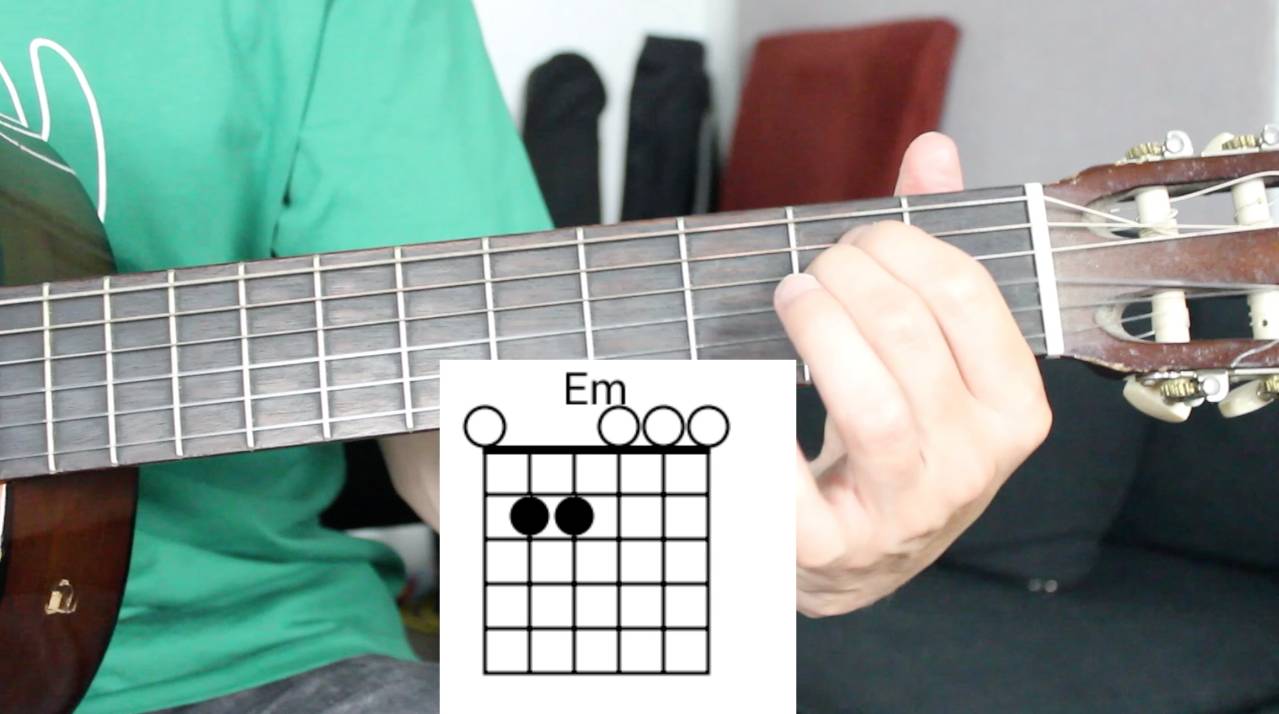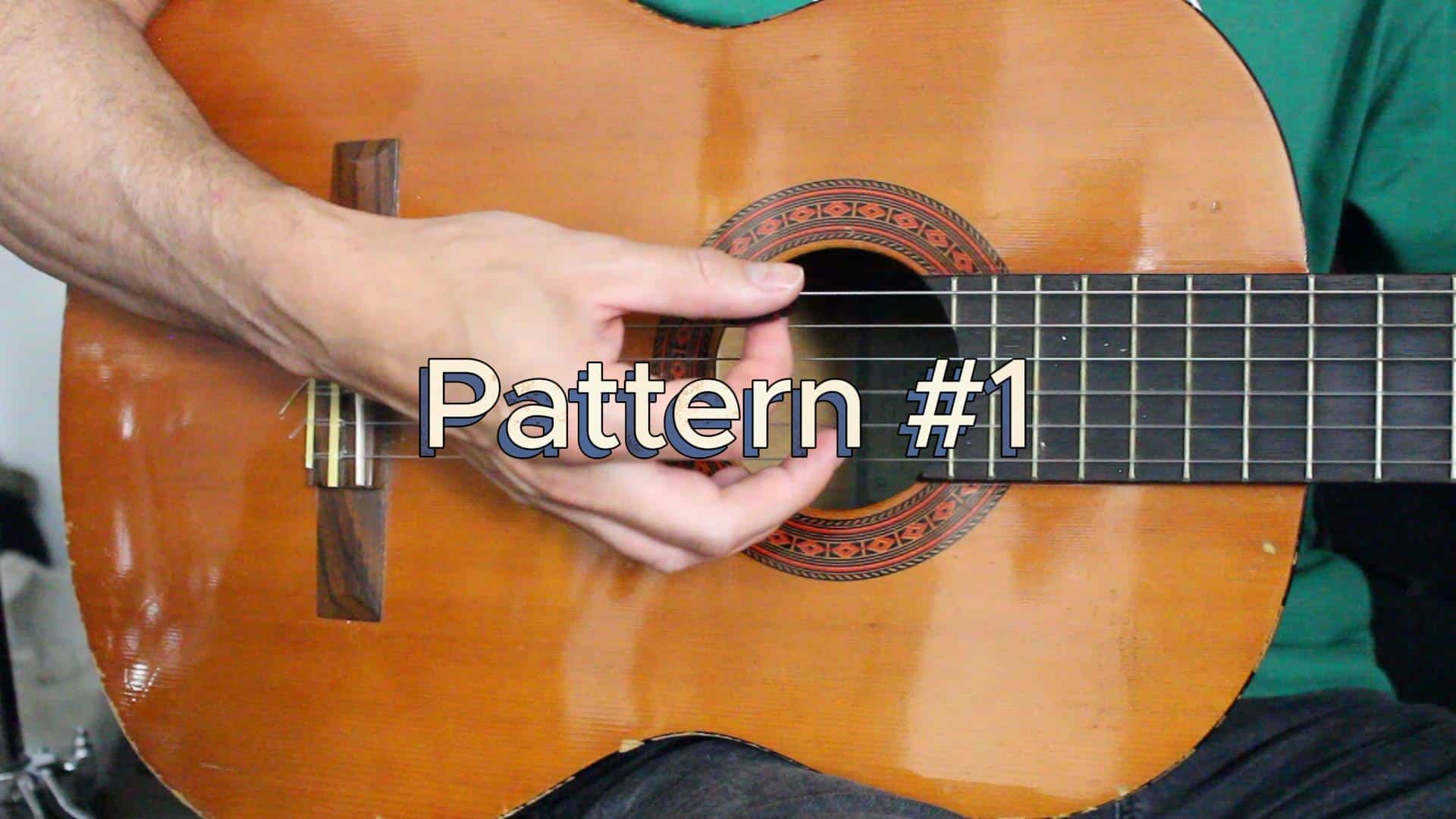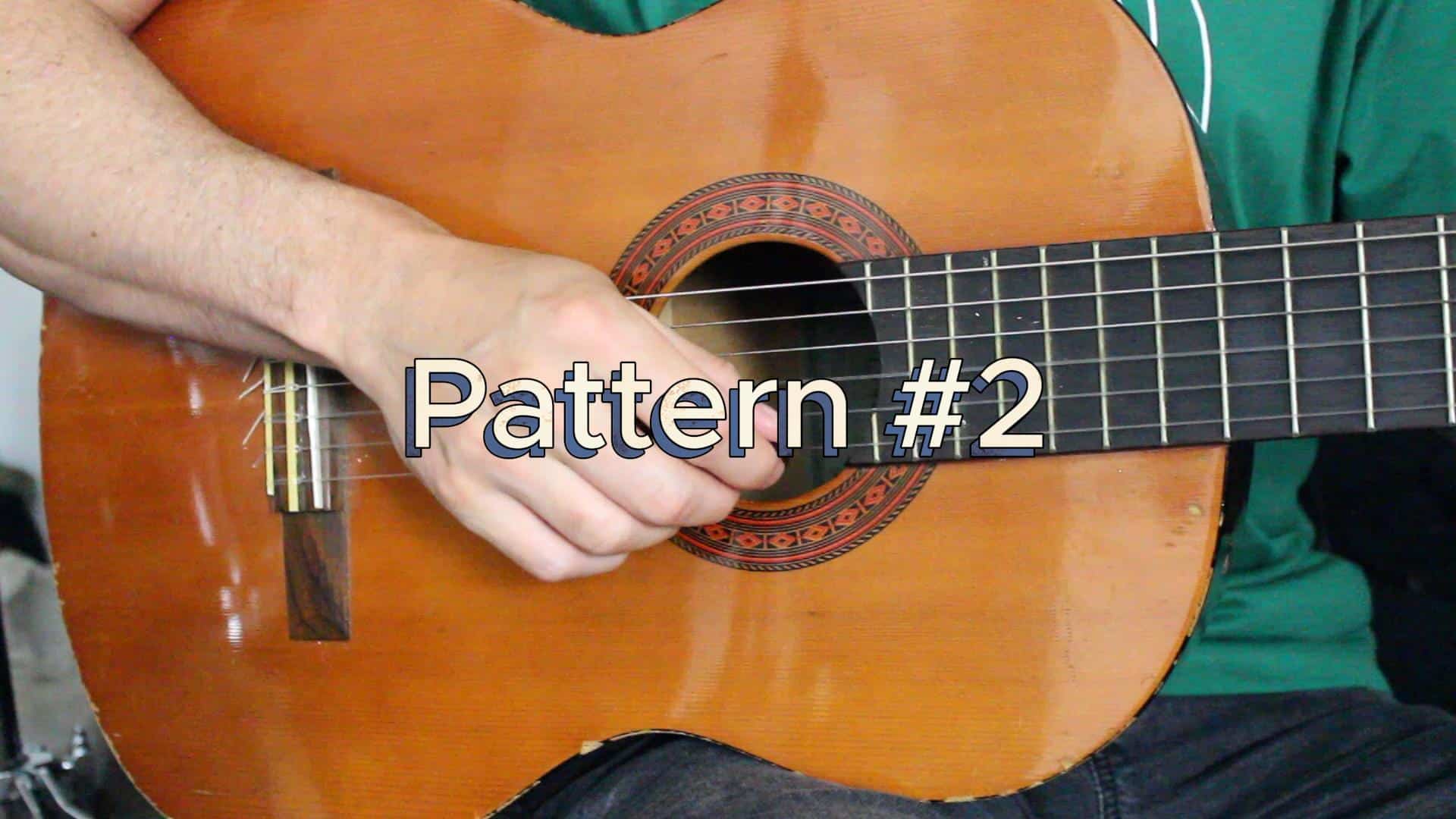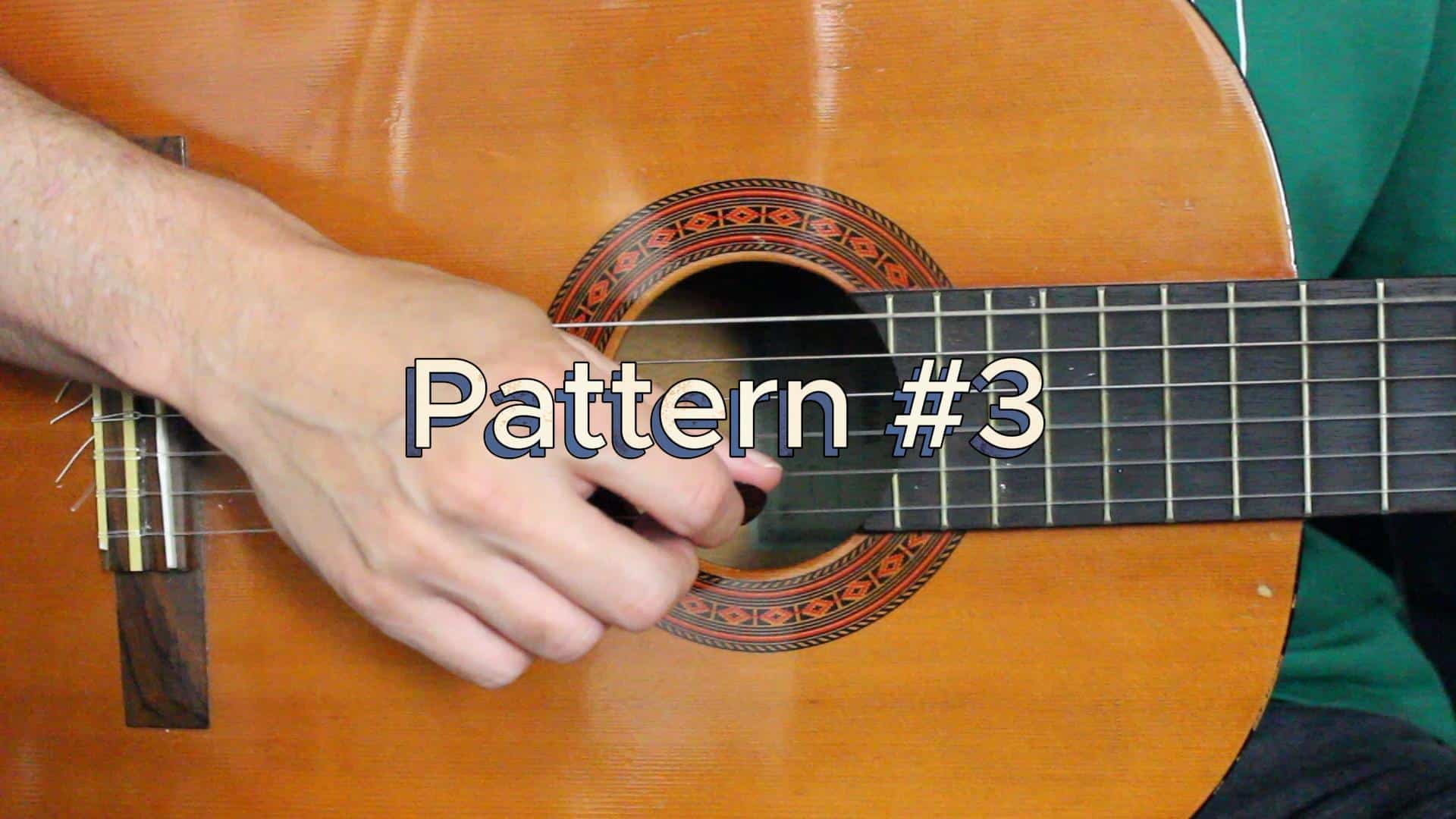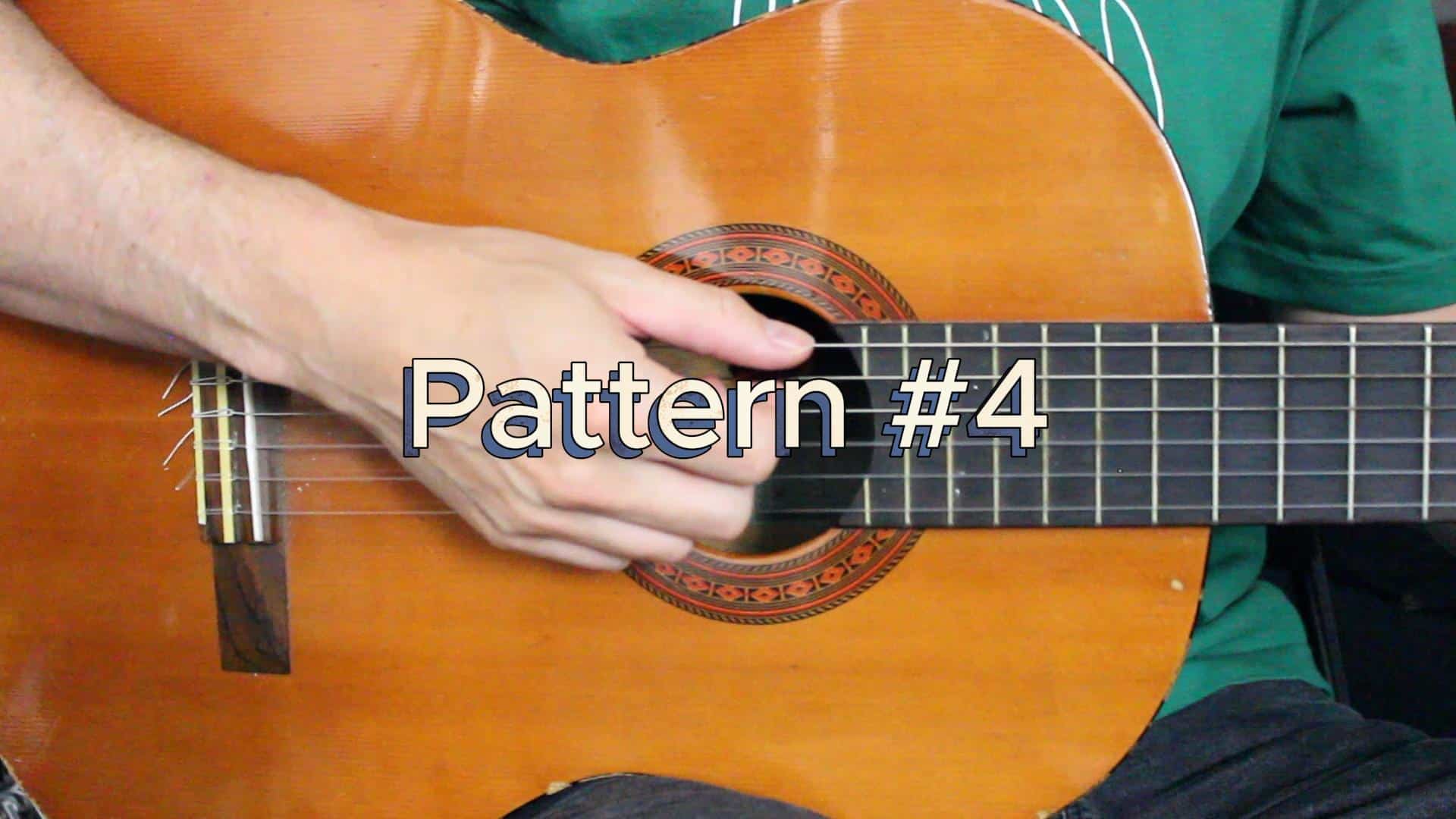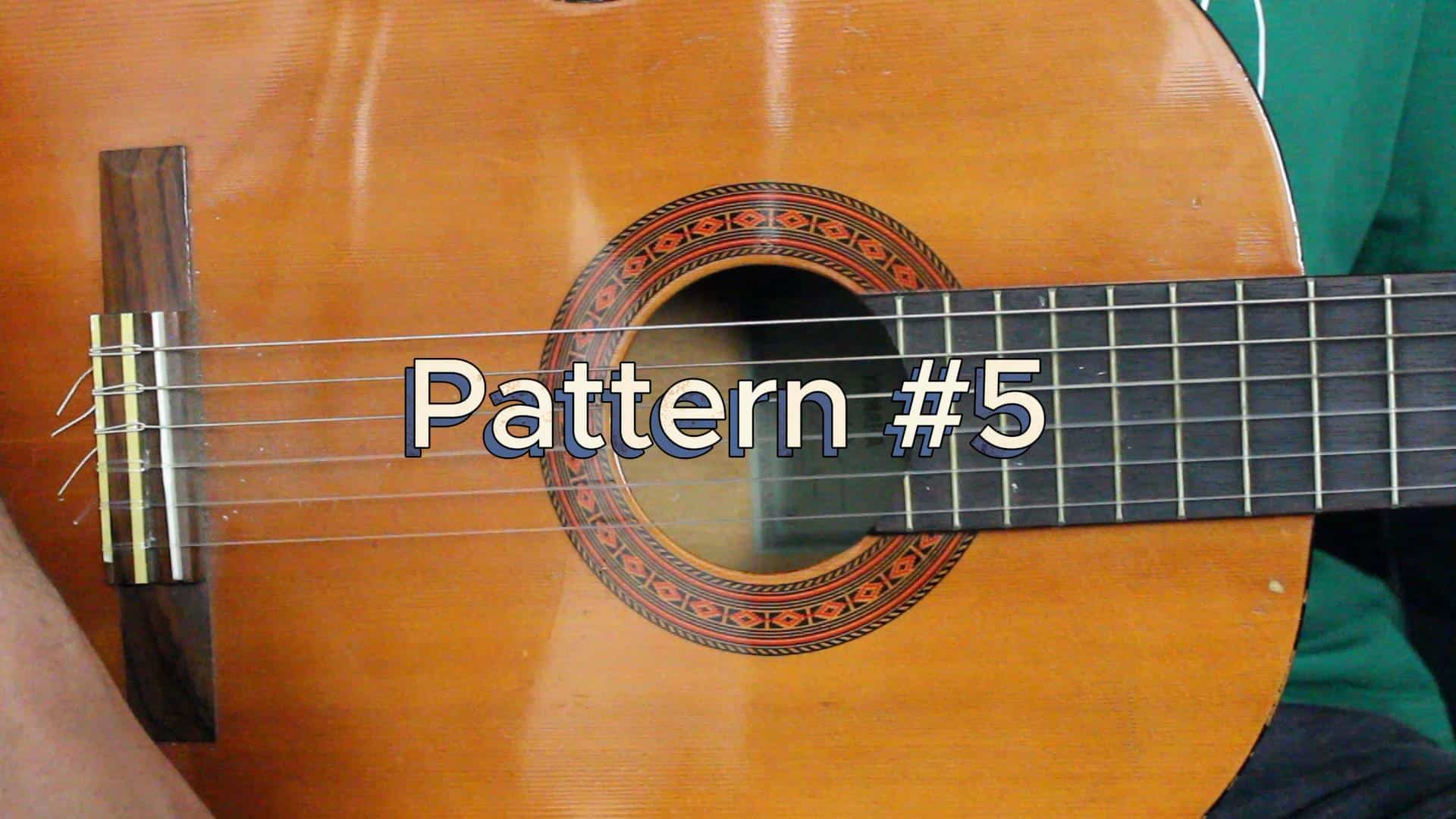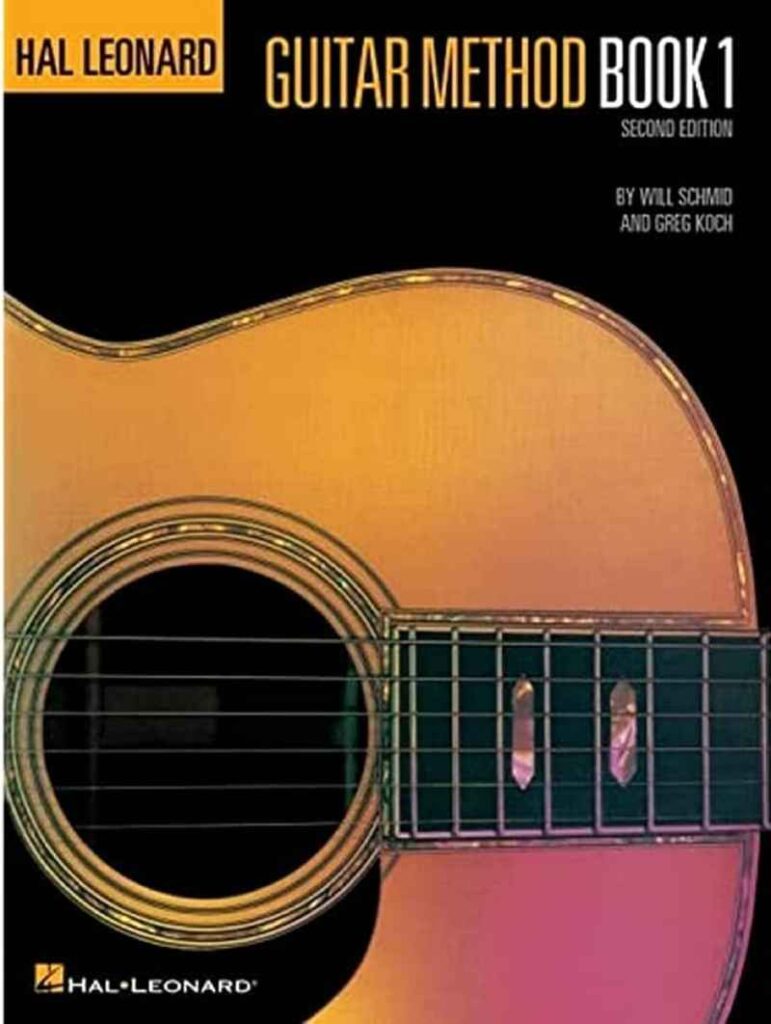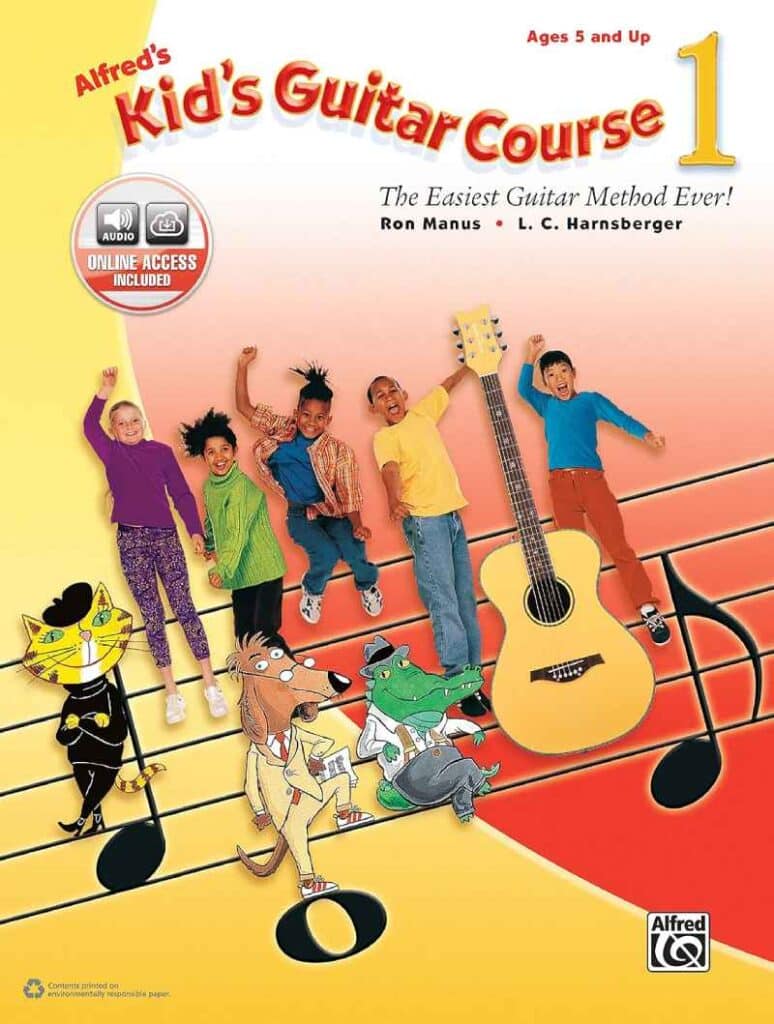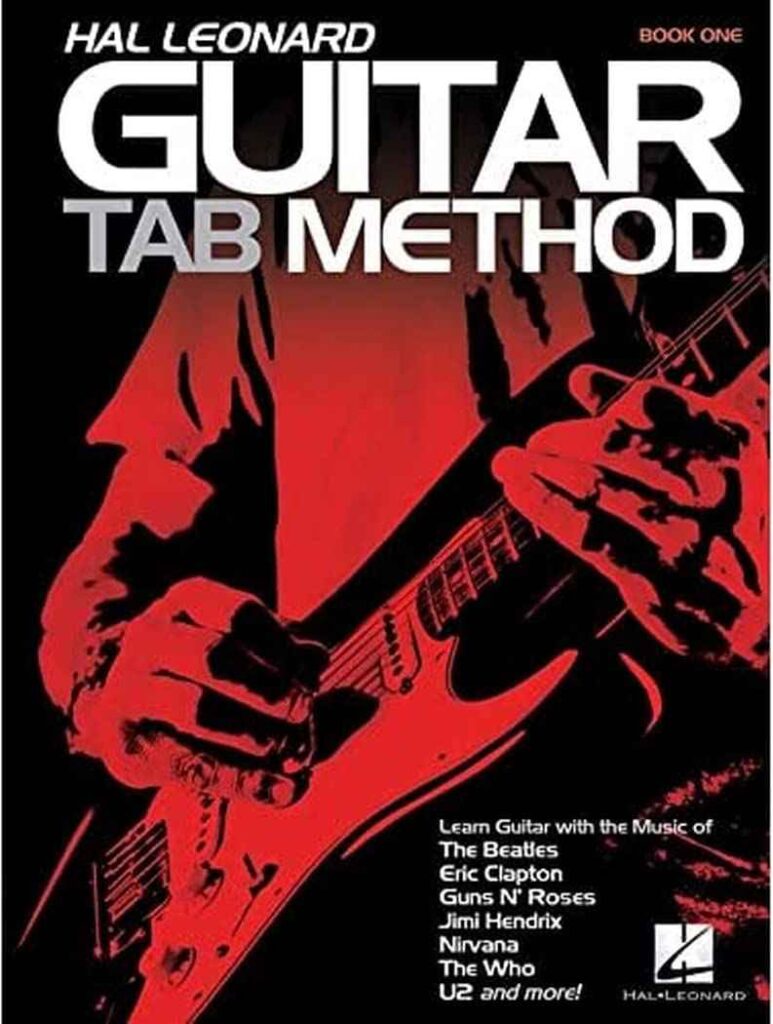
In this article, you’ll learn how to play guitar step by step. This guide is intended for guitar beginners. Remember that learning takes time so please be patient with yourself. Please bookmark this article because you will need to come back to it regularly to learn all the content. I recommend practising around 3 times per week for 30 minutes for at least 3 months to see good results. Find a time in your schedule that works for you. I like to play at the end of the workday to unwind.
How to Choose the Best Guitar?
The price
There are multiple aspects to consider before buying a guitar. The first aspect you should consider is the price. Guitar prices vary greatly, but you can get one for as low as 100$. We can break down these price ranges into three tiers: beginner guitars, intermediate-level guitars and high-end (professional) guitars. Beginner guitars usually vary between 100$ to 400$ meanwhile intermediate-level guitars go for between 400$ and 800$ and high-end guitars vary between 1000$ to 2000$. We recommend that you buy a beginner guitar as you don’t want to spend too much money on your first guitar and they offer good quality for the price.
Guitare Type
The second thing to consider is which type of guitar is right for you. Which type of music do you want to play? If you plan to play country or folk music you should opt for an acoustic guitar but if you plan to play metal or rock music you should opt for an electric guitar instead. Each type of guitar has its advantages and disadvantages. As a general rule, we recommend classical guitars for beginners because nylon strings are easier on the fingers and prevent a loss of motivation due to pain (which is common with steel string acoustic guitars).

Size
The third thing to consider is the guitar size. Guitars come in different sizes so it’s essential to choose one that fits your body the best. Typically, adults choose Standard-sized guitars, whereas children might opt for a smaller-sized guitars. See the size chart below to help you pick the guitar that suits you best.

To see which guitars we recommend, check out our article How to Choose the Best Guitar for Beginners.
Start by learning these 4 guitar chords
The first thing you should pick up when learning how to play guitar for beginners is the G, C (or Cadd9), Em and D chords. Why? Because these are the most commonly played chords on the guitar. Once you can transition between these 4 chords well, you can learn hundreds if not thousands of popular guitar songs. See our complete article on First 4 Chords to Learn on Guitar to learn in more detail.
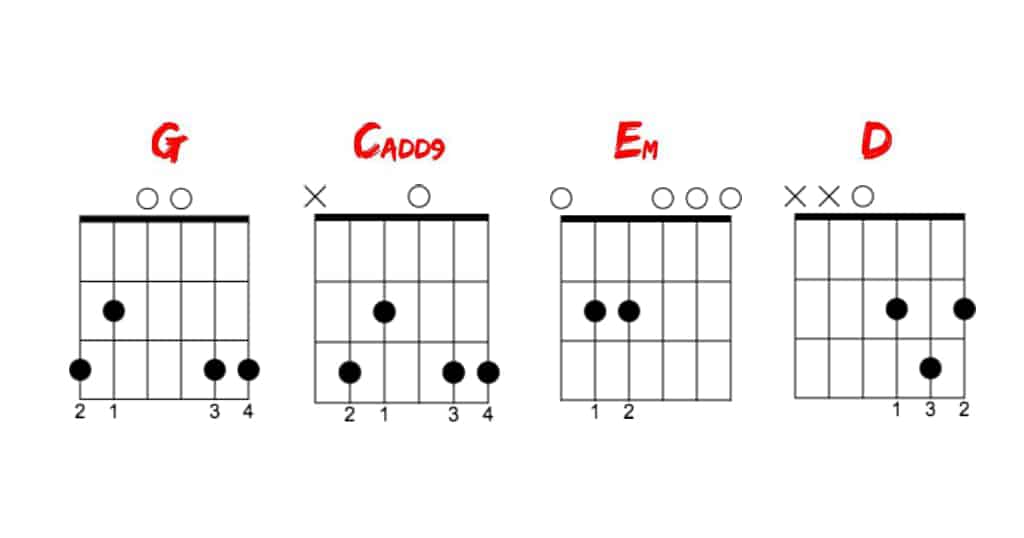
Chord transitions: C to G
Chord transitions are one of the most difficult tasks when learning how to play guitar. That’s why we recommend starting with Cadd9 instead of C major, because it makes the transition easier going from C to G. To make this transition move your index and major finger up one string
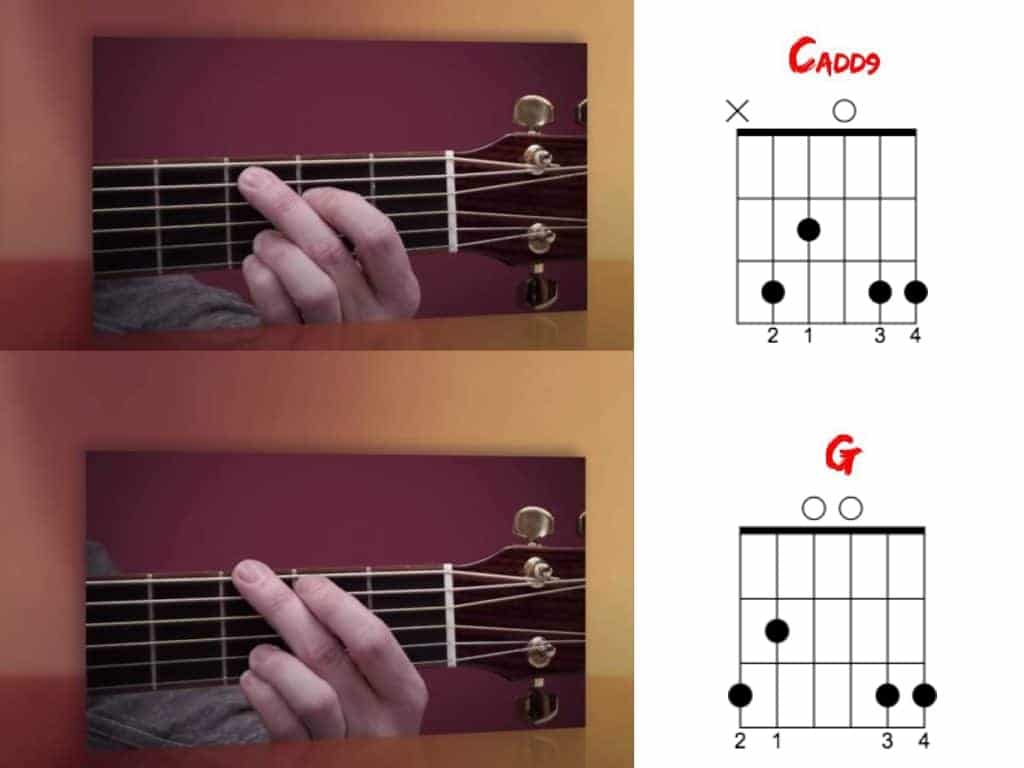
Now it’s time to practice this transition with a strumming pattern and a pick. Initially, I recommend keeping the rhythm simple by using only down strums. Once you’re comfortable, you can progress to more complex strumming patterns.
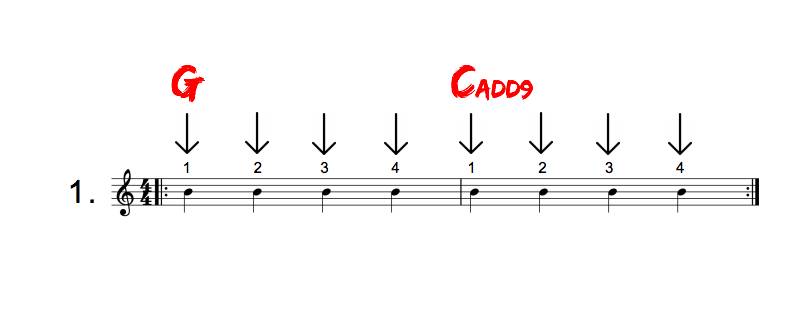
D Major
Let’s learn D major. The D Major often follows the G Major, as they frequently appear together. In music theory, this happens because both chords belong to the key of G Major
The Transition From G to D
After practicing the D chord on its own, it’s time to work on transitioning from G to D. To make this transition smoother, keep the ring finger (or 3rd finger) in place as you move from G to D. *Keeping common fingers down when moving from one chord to another is the foundation of good guitar technique.
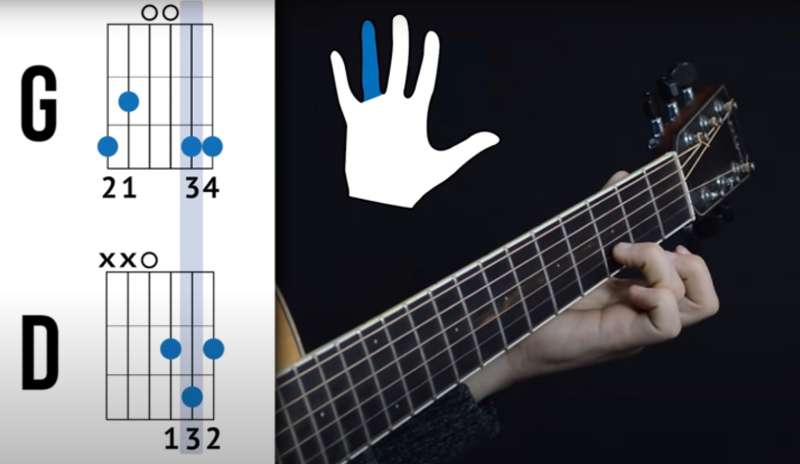
Once again, we’ll begin by keeping the rhythm simple with only down strums.
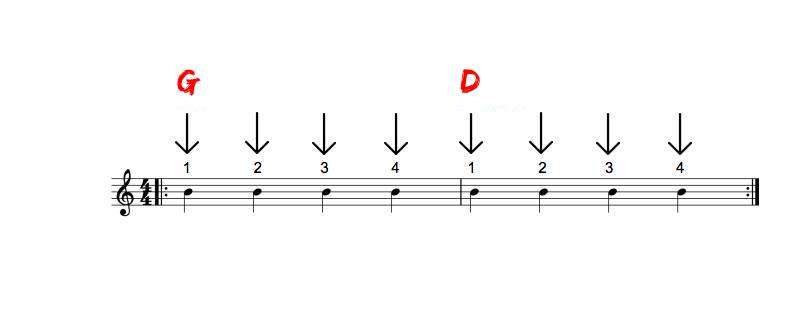
Connect the Three Chords
Having mastered our three chords and their transitions, we’ll now practice a sequence that incorporates all three chords together.
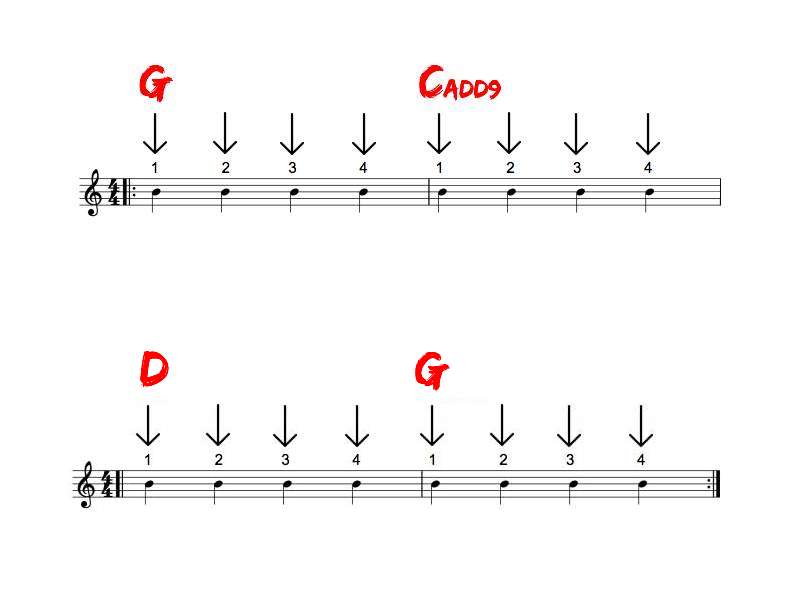
Finally, Include the EM Chord
The final exercise is to seamlessly connect all four chords in succession using a basic down strum pattern and gradually move to a more complex strumming technique (shown below).
Guitar Strumming Patterns
Guitar strumming patterns are essential for learning how to play guitar. These are typically played using your right hand with a pick or with your fingers. The patterns are presented in order of difficulty. It’s perfectly fine to use a simple pattern while learning a new song. A more advanced one can be used at a later point if you wish. Read our article on guitar strumming patterns and download the accompanying PDF.
Strumming pattern #1

This initial strumming pattern utilizes “quarter notes.” This basic musical subdivision assigns each note or strum a value of one count. You can use this strumming pattern when first learning a song or to practice chord transitions.
How do I practice this strumming pattern?
Pick a chord you are comfortable with, like Em or G. Using a pick or the nail of your index finger, strum all 6 strings of the guitar in a downward motion (down strum). Count 1, 2, 3, 4, ensuring you hit all 6 strings each time.
Strumming pattern #2

This strumming pattern uses eighth notes, meaning the notes move twice as quickly as quarter notes (pattern #1). To play eighth notes smoothly, alternate between a downward and upward strumming motion. (It will be easier to use a pick than your fingers for strumming upwards).
- Make sure you hold the pick flexibly and touch the 6 strings of the guitar.
- Avoid playing too hard
- Practice slowly
Strumming Pattern #3

The dotted arrows indicate that you should not touch the strings while moving your hand upward.
Strumming pattern #3, mainly an exercise, helps you focus on upward strums. Count out loud: 1 +, 2 +, 3 +, 4 +, aligning your upward movements with the “+.”
Strumming Pattern #4

Having mastered the basics, it’s time to explore more complex rhythms on the guitar. To help you “hear” strumming pattern #4, start by clapping and counting out loud. To do this, count 1+ 2+ 3+4+ while clapping only the played rhythms (the solid lines).
Strumming Pattern #5

Strumming pattern #5 is often called “the universal strumming pattern” because it’s versatile and can be used in many popular songs such as “Let it Be,” “Time of Your Life,” and “Country Roads” and more.
Popular Guitar Songs for Beginners
Now that you can comfortably play a few chords and a strumming pattern or two, it’s time to learn a song. Playing a song is the most fun way to learn how to play guitar. We’ve put together a mix of 9 guitar songs for beginners with detailed explanations. Many of these songs use the 4 chords covered above (Knocking on Heaven’s Door, Time of Your Life, Wish You Were Here), while a few others are more riff-based or use Power Chords (Californication, A Whole Lot of Love, Zombie, Rolling in the Deep)
Easy Guitar Songs to Play and Sing
We also have an article on how to learn 5 Easy Guitar Songs to Play and Sing for those of you who enjoy singing along to what you play.
Basic Guitar Music Theory
It is important to learn some basic guitar music theory when learning how to play guitar. This will help you understand what you are playing on the guitar. It will also help you learn and remember things better since you will have a better mental representation of what you are doing. Music Theory includes:
Learning to read music:
Learning to read music is not essential to playing the guitar, but it is helpful. I recommend Hal Leonard Guitar Method 1 for those of you who are interested in learning to read music on the guitar. Alternatively, learning to read guitar tabs is perfectly acceptable. For learning about tab reading, I recommend Hal Leonard Guitar Tab Method.
What is a key?
Understanding what a key is in music is very helpful. It will allow you to change the key of a song to find the key that is best suited for your voice or to find a different set of chords that are easier for you to play. We’ve put together a guide for learning guitar music theory essentials.
Understanding the major scale
To grasp keys, it’s essential to comprehend the major scale. Among various scales, the major scale holds paramount importance and is widely utilized, making it an ideal starting point.
The major scale in the key of C consists of the following notes: C-D-E-F-G-A-B-C, collectively forming the key of C major. On the guitar, it is depicted as follows:

Understanding chords
A chord comprises a minimum of three notes played simultaneously, although it may include more. However, it cannot contain fewer than three notes. When only two notes are played together, it creates either a harmony or a power chord, but it doesn’t constitute a genuine chord. Furthermore, chords are usually built by stacking notes in intervals of thirds.
Which guitar book should I get?
If you’re looking to buy a guitar book, we recommend these three books. To learn more about these three books, you can consult our article The 5 Best Guitar Books for Beginners
Conclusion: How to Play Guitar for Beginners
We hope that this article was helpful towards the beginning of your guitar journey and learning how to play guitar for beginners. It is always optimal to learn the guitar with a qualified teacher. Musiprof offers guitar classes all across Canada in Montreal, Toronto and Vancouver. Book your first lesson with one of our teachers today !

